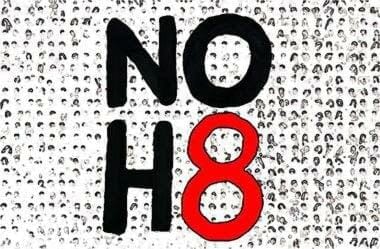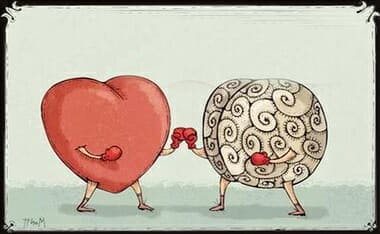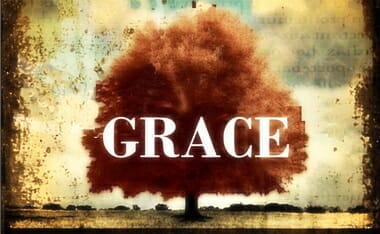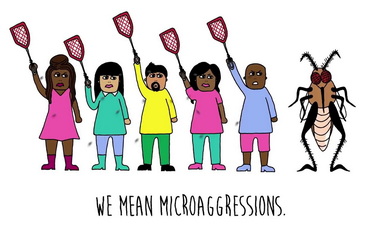(Originally Posted July, 2016)
The number of cases of syphilis, a sexually transmitted disease treatable with antibiotics, nearly doubled, from 8,724 to 16,663 between 2005 and 2013, according to the CDC summary of state health department data.
The report from the CDC found that majority of these cases were documented among gay and bisexual men. In 2012, 84% cases of syphilis were reported among gay and bisexual men.
The CDC team says that the increase in syphilis among MSM is a major public health concern, particularly because syphilis and the behaviors associated with acquiring it increase the likelihood of acquiring and transmitting human immunodeficiency virus (HIV)…
Via Gay Patriot:
Scientist Sacked for Linking Gay Sex to HIV Transmission (site defunct)
In the Central American country of Belize, there is a political debate going on whether to repeal the country’s laws against Anal Sodomy. (a.k.a Buttsecks, for those of you in Rio Linda.) In 2013, the Supreme Court of Belize solicited a report from Dr. Brendan Bain… a renowned AIDS researcher and director of the Regional Coordinating Unit of the Caribbean HIV/AIDS Regional Training (CHART), an organization he helped create as part of his pioneering work studying HIV transmission. Dr. Bain, unfortunately, provided a scientifically accurate but politically incorrect report.
This report shows that the relative risk of contracting HIV is significantly higher among men who have sex with other men (MSM) in Belize than in the general population. This is also true in several other countries for which data are available, including countries that have repealed the law that criminalizes anal sex and countries where the law still applies.
Because of this report, some 35 “advocacy groups” banded together and demanded that Dr. Bain be sacked from CHART, because his report hurt the delicate feelers of gays and lesbians.
I have come to the conclusion that love and concern for the well-being of the same-sex partner resides mostly with couples SS couples who are conservative. Why? Because they ask what is better for societies continued cohesion, and what is better for my partner. The Left destroys most things it touches, yes, even truth bows to their feelings:
This is from: VICTORY GIRLS

STD Rates Increasing; Leftists Blame “Homophobia”
Gonorrhea and syphilis are on the rise in the U.S., mostly in men who have sex with men, a trend the government said is linked to inadequate testing among people stymied by homophobia and limited access to health care.
What does Homophobia have to do with being sexually irresponsible and spreading diseases? Nothing, really, but it does excuse the Democrat left constituency from personal responsibility for bad behavior while villainizing people who don’t support the social left agenda.”
And since the social left has been using every tool in its arsenal… entertainment media, news media, public school indoctrination, and heavy-handed Government… to normalize and celebrate homosexuality for the last twenty years or more; isn’t it admitting failure to claim that homophobia exists?
And here is an excerpt from my cumalative case against making marriage between same-sex couples the same-as hetero marriages:
➋ GENERAL HEALTH — To explain why I end a couple of points with “THIS is the loving thing to do,” is because I was challenged with Scripture to “love my neighbor.” The person was equating acceptance of same-sex marriage with love. So I responded with the really loving thing to do.
If one of my boys came up to me and mentioned they were gay, my first concern would be their physical health. The death rate and the passing of bacteria directly into the blood stream in the gay relationship is very high. The CDC, to use one example, says that In 2008, “men who have sex with men (MSM) accounted for 63% of primary and secondary syphilis cases in the United States.” The gay population of men is about 1.6% of the U.S. population. “… [N]ature designed the human rectum for a single purpose: expelling waste from the body. It is built of a thin layer of columnar cells, different in structure than the plate cells that line the female reproductive tract. Because the wall of the rectum is so thin, it is easily ruptured during intercourse, allowing semen, blood, feces, and saliva to directly enter the bloodstream. The chances for infection increases further when multiple partners are involved, as is frequently the case: Surveys indicate that American male homosexuals average between 10 and 110 sex partners per year (L. Corey and K. K. Holmes, ‘Sexual Transmission of Hepatitis A in Homosexual Men,’ New England Journal of Medicine; and, Paul Cameron et al., ‘Sexual Orientation and Sexually Transmitted Disease,’ Nebraska Medical Journal). Not surprisingly, these diseases shorten life expectancy” (http://tinyurl.com/8jr3tt2). (Other diseases of course include HIV, and also: gonorrhea, herpes, hepatitis A and B, a variety of intestinal parasites including amebiases and giardiasis, and even typhoid fever at much higher rates.)
The chasm between the obvious and extreme health risks associated with “gay” male sex and the CDC’s politically correct, pro-homosexuality mindset reflects public policy malpractice on an Orwellian scale. “Gay” activist ideology and assumptions — including intrinsic (many would claim innate) “gay”/bi/transgender identities — go unquestioned at the CDC. Ironically, the most direct answer to the HIV-youth crisis — teaching young people NOT to practice unhealthy homosexual sex — is the one thing that is essentially forbidden. (CCV)
An in-depth study by a large insurance company which provides quotes from more than 200 insurers to people across the US, pointed out that gay men have a life expectancy 20 years shorter than heterosexual men (http://tinyurl.com/bnuspjv). An ALL POINTS BULLETIN going out to the Left: the gay lifestyle takes more years off of one’s life than smoking. Where are all the campaigns trying to save lives? Do you not care about gay men and women?
Here is a graph from the CDC tracking Syphilis from 2007-2011, something NARTH says that the newest 2012 report “finds that STDs continue to threaten the health and well-being of millions of Americans, particularly gay and bisexual men and young people.”
Click to enlarge
“Trend data available for the first time this year [speaking about the updated 2012 CDC report] show that primary and secondary syphilis cases – the most infectious stages of the disease — are increasing among gay and other men who have sex with men, who now account for more than 70 percent of all infections. If not adequately treated, syphilis can lead to paralysis, dementia and death. Syphilis infection can also place a person at increased risk for HIV infection. Given the high prevalence of HIV in the gay community, increasing syphilis infections among gay and bisexual men are particularly troubling.” (CDC)
Some more stats and studies:
1) …Gay and bisexual men are at significant risk for developing anal cancer, and testing them for the disease would save many lives, says a new study in the American Journal of Medicine.Anal cancer in gay men is as common as cervical cancer was in women before the use of the Pap smear…. (WebMD)
2) …An in-depth study by a large insurance company which provides quotes from more than 200 insurers to people across the US, pointed out that gay men have a life expectancy 20 years shorter than heterosexual men (life insurance). An ALL POINTS BULLETIN going out to the Left: the gay lifestyle takes more years off of one’s life than smoking. Where are all the campaigns trying to save lives? Do you not care about gay men and women?
3)…primary and secondary syphilis cases – the most infectious stages of the disease — are increasing among gay and other men who have sex with men, who now account for more than 70 percent of all infections. (CDC) [That is less than 1.7% of the population that accounts for this LARGE percentage]
4) The nation’s HIV rate has fallen by a third in the last decade, the federal researchers said in a new report released Saturday. While many population groups shared in this welcome decline in new HIV cases, one group — young gay or bisexual men — saw a 133 percent increase over the time period….. Around 62 percent of HIV cases in the United States are due to MSM [men who have sex with men] sexual contact, the report’s data showed. (Washington Times)
5) Table 2 compares the life expectancy and loss in expectation of life attributable to HIV/AIDS at age 20 years for gay and bisexual men versus all men. Life expectancy at age 20 for gay and bisexual men ranged from 34.0 to 46.3 years for the three scenarios. The lowest figure was for the 3% scenario and highest when 9% of the total male population was assumed to be gay and bisexual. Figures for all three scenarios of gay and bisexual men were considerably lower than the life expectancy for all men of 54.3 years. The loss in life expectancy due to HIV/AIDS for gay and bisexual men ranged from 21.3 years to 9.0 years for the 3% and 9% scenarios respectively. (Oxford Journal)
- Take note the number changes per the percentage of gay/bi-sexual men and women. The high percentage of gay is 2.8% ~ the low is 1.4% ~ but is most likely 1.7% — that is total gay men and women as well as bi-sexual. Gay men make up a small percentage of this total and the majority of HIV/AIDS, Syphilis, Hepatitis, anal cancer, and the like ~ which would even increase the mortality rat shown in the study.
All of the above [and much more not cited] lends to the following being confirmed:
WASHINGTON, DC, June 6, 2005 (LifeSiteNews.com) – A new study which analyzed tens of thousands of gay obituaries and compared them with AIDS deaths data from the Centers for Disease Control (CDC), has shown that the life expectancy for homosexuals is about twenty years shorter than that of the general public. The study, entitled “Gay obituaries closely track officially reported deaths from AIDS”, has been published in Psychological Reports (2005;96:693-697).
In an interview with lifesitenews.com, Dr. Paul Cameron, the President of the Family Research Institute and the scientist who headed the study, indicated that he was not at all surprised by the findings. Rather he said that it only served as further confirmation for what had long been known and other studies have already shown.
One such study was conducted in Vancouver British Columbia and published in 1997 in the International Journal of Epidemiology (Vol. 26, 657-61). It almost exactly mirrors the findings of Cameron’s research.
The Vancouver study was conducted by a team of pro-gay researchers, who, upon finding that pro-family advocates were using the results of their research as confirmation for their beliefs about the risks of the homosexual lifestyle, issued a statement trying to curb this unintended after-effect. “The aim of our work,” said the research team, “was to assist health planners with the means of estimating the impact of HIV infection on groups, like gay and bisexual men, not necessarily captured by vital statistics data and not to hinder the rights of these groups worldwide. Overall, we do not condone the use of our research in a manner that restricts the political or human rights of gay and bisexual men or any other group.”…. (LifeSite News)
UPDATE!
MOONBATTERY notes the following:
In a Center for Disease Control fact sheet that was put out in November 2015 with studies from 2014, which outlined the national data for sexually transmitted diseases (STDs) in America, it was “particularly gay and bisexual men” who are at greatest risk for syphilis as rates of syphilis are increasing at an alarming rate. …
According to the fact sheet, “Trend data show rates of syphilis are increasing at an alarming rate (15.1 percent in 2014). While rates have increased among both men and women, men account for more than 90 percent of all primary and secondary syphilis cases. Men who have sex with men (MSM) account for 83 percent of male cases where the sex of the sex partner is known. Primary and secondary syphilis are the most infectious stages of the disease, and if not adequately treated, can lead to long-term infection which can cause visual impairment and stroke. Syphilis infection can also place a person at increased risk for acquiring or transmitting HIV infection. Available surveillance data indicate that an average of half of MSM who have syphilis are also infected with HIV.”
- When the leftist social engineers in charge of most everything promote homosexuality, they are not just promoting decadence and degeneracy; they are promoting disease.
So if a homosexual male truly loved his partner, he would abstain from any sodomy type acts (this included hetero as well). If someone has a true friend who happens to be gay, they will in moments of friendship, counsel them to do the same — that is, curb gay sexual acts. In other words, society allows people to smoke, but it doesn’t encourage the action. I grew up in an era where “Marlborough” was on Formula One cars, TV shows had smoking, etc No more, and the truth about the consequences of smoking is passed on to young people. The homosexual lifestyle is not a healthy choice, and it isn’t an alternative lifestyle. And it shouldn’t be held up to young minds as being equal — talking health wise — to the hetero lifestyle. While showing my son love, I would challenge him to curb his desires, as society should as well.
THIS is the LOVING thing to do.
From a previous post
Since marriage is no longer about creating a stable environment for children, and has become (and this mainly the fault of heterosexual liberals [e.g., liberalism]) about personal fulfillment, validation, and access to social benefits, there literally is no constraint on how much more broadly it can be redefined. — GAY PATRIOT
Gay Patriot bravely steps out on this subject and accepts the challenge… as any rational thinking conservatarian would:
The New York Times has noticed that bareback sex is a thing gay people are doing, which is breaking news from about the mid-1990′s when (according to Wikipedia) gay publications like The Advocate first took note of the phenomenon of gay men having unprotected sex and, in some cases, deliberately seeking HIV infection.
Anyway, the Times, perhaps after failing to find a celebrity to comment on the issue, goes to the next best source for information on epidemiology and behavioral psychology… an English professor from SUNY-Buffalo. Who provides this analysis:
What I learned in my research is that gay men are pursuing bareback sex not just for the thrill of it, but also as a way to experience intimacy, vulnerability and connection. Emotional connection may be symbolized in the idea that something tangible is being exchanged. A desire for connection outweighs adherence to the rules of disease prevention.
And some guys are apparently getting intimate, tangible, emotional connections 10-20 times a night in bathhouses.
It also seems that the readers of the NY Times, based on the comments, are in complete denial that this phenomenon exists, and think the author is just making it up to attack the gay community. Liberals choose to blame the recent dramatic increases in HIV infection rates on “the stigma attached to HIV.” Um, excuse me, but don’t stigmas usually make people avoid those things to which stigmas are attached?
In the real world, stigmatizing a behavior results in less of it: Which is why people don’t use the N-word in public any more and smoking has declined as a social activity. When the social stigma is removed … as with HIV infection and teenage pregnancy … you get more of those things.
…READ MORE…
Bravo. I just wish to mention that this area of the body is not made for sex. And many will read the following and think that this is an attack on the humanity of the gay lifestyle/choice. It is not, it is a cry for gay men to become monogamous and cease having relations with the people they purport to love in that area. It is out of compassion, not hatred the following is pointed out:
Homosexuals also continue to contract and spread other diseases at rates significantly higher that the community at large. These include syphilis, gonorrhea, herpes, hepatitis A and B, a variety of intestinal parasites including amebiases and giardiasis, and even typhoid fever (David G. Ostrow, Terry Alan Sandholzer, and Yehudi M. Felman, eds., Sexually Transmitted Diseases in Homosexual Men; see also, Sevgi O. Aral and King K. Holmes, “Sexually Transmitted Diseases in the AIDS Era,” Scientific American). This is because rectal intercourse or sodomy, typically practiced by homosexuals, is one of the most efficient methods of transmitting disease. Why? Because nature designed the human rectum for a single purpose: expelling waste from the body. It is built of a thin layer of columnar cells, different in structure than the plate cells that line the female reproductive tract. Because the wall of the rectum is so thin, it is easily ruptured during intercourse, allowing semen, blood, feces, and saliva to directly enter the bloodstream. The chances for infection increases further when multiple partners are involved, as is frequently the case: Surveys indicate that American male homosexuals average between 10 and 110 sex partners per year (L. Corey and K. K. Holmes, “Sexual Transmission of Hepatitis A in Homosexual Men,” New England Journal of Medicine; and, Paul Cameron et al., “Sexual Orientation and Sexually Transmitted Disease,” Nebraska Medical Journal).
Not surprisingly, these diseases shorten life expectancy. Social psychologist Paul Cameron compared over 6,200 obituaries from homosexual magazines and tabloids to a comparable number of obituaries from major American Newspapers. He found that while the median age of death of married American males was 75, for sexually active homosexual American males it is 42. For homosexual males infected with the AIDS virus, it was 39. While 80 percent of married American men lived to 65 or older, less than two percent of the homosexual men covered in the survey lived as long
…these problems don’t remain personal and private. The drive, especially since this issue is associated with the word “gay rights,” is to make sure your worldview reflects theirs. To counter this effort, we must demand that the medical and psychiatric community take off their PC blinders and treat these people responsibly. If we don’t, the next thing you know, your child will be taking a “tolerance” class explaining how “transexuality” is just another “lifestyle choice”…. After all, it is the only way malignant narcissists will ever feel normal, healthy, and acceptable: by remaking society – children – in their image
Tammy Bruce, The Death of Right and Wrong: Exposing the Left’s Assault on Our Culture and Values (Roseville: Prima, 2003), 92, 206.
In the black community, for example, one of the major factors in the degradation of that sub-culture is fatherlessness. In order to stop the devolving of young men into criminals, the black community would have to step up to the plate and accept responsibility for their own actions and change behavior… not blaming outside forces. Similarly, the gay community will have to battle their demons as well to help their subculture. See my Cumulative Case for some ideas of what these demons are.
Many years ago, Tammy Bruce reemphasized this dangerous, self-destructive notion and action:
….What a difference treatment makes! As researchers succeeded in developing ever more effective drugs, AIDS became—like gonorrhea, syphilis, and hepatitis B before it—what many if consider to be a simple “chronic disease.” And many of the gay men who had heeded the initial warning went right back to having promiscuous unprotected sex here is now even a movement—the “bareback” movement—that encourages sex without condoms. The infamous bathhouses are opening up again; drug use, sex parties, and hundreds of sex partners a year are all once again a feature of the “gay lifestyle.” In fact, “sexual liberation” has simply become a code phrase for the abandonment of personal responsibility, respect, and integrity.
In his column for Salon.com, David Horowitz discussed gay radicals like the writer Edmund White. During the 1960s and beyond, White addressed audiences in the New York gay community on the subject of sexual liberation. He told one such audience that “gay men should wear their sexually transmitted diseases like red badges of courage in a war against a sex-negative society.” And did they ever. Then, getting gonorrhea was the so-called courageous act. Today, the stakes are much higher. That red badge is now one of AIDS suffering and death, and not just for gay men themselves. In their effort to transform society, the perpetrators are taking women and children and straight men with them.
Even Camille Paglia, a woman whom I do not often praise, astutely commented some years ago, “Everyone who preached free love in the Sixties is responsible for AIDS. This idea that it was somehow an accident, a microbe that sort of fell from heaven—absurd. We must face what we did.”
The moral vacuum did rear its ugly head during the 1960s with the blurring of the lines of right and wrong (remember “situational ethics”?), the sexual revolution, and the consequent emergence of the feminist and gay civil-rights movements. It’s not the original ideas of these movements, mind you, that caused and have perpetuated the problems we’re discussing. It was and remains the few in power who project their destructive sense of themselves onto the innocent landscape, all the while influencing and conditioning others. Today, not only is the blight not being faced, but in our Looking-Glass world, AIDS is romanticized and sought after….
Tammy Bruce, The Death of Right and Wrong: Exposing the Left’s Assault on Our Culture and Values (Roseville: Prima, 2003), 96-97.
And take note I talk about the nihilistic culture in the gay community [infected by liberalism] in a more philosophical and religious sense than most places, from my chapter in my book:
…Foucault looked at truth as an object to be constructed by those whom wielded the power to define facts. “Madness, abnormal sex, and criminality were not objective categories but rather social constructs.”[73] He embraced what mainstream society had rejected, which was sadomasochism and drug use. In 1984 Foucault died from contracting AIDS. One should take note that Foucault so enjoyed his hope of dying “of an overdose of pleasure” that he frequented gay bathhouses and sex clubs even after knowing of his communicable disease. Many people were infected because of Foucault and Foucault’s post-modern views.[74] On a lighter note, Dinesh D’Souza tells of a contest about the time Foucault was dying. The story is fitting for those who view hell as a real option:
People were debating whether AIDS victims should be quarantined as syphilis victims had been in the past. [William F.] Buckley said no. The solution was to have a small tattoo on their rear ends to warn potential partners. Buckley’s suggestion caused a bit of a public stir, but the folks at National Review were animated by a different question: What should the tattoo say? A contest was held, and when the entries were reviewed, the winner by unanimous consent was Hart.[75] He [Hart] suggested the lines emblazoned on the gates to Dante’s Inferno: “Abandon all hope, ye who enter here.”[76]
You see, in order to have one’s alternative lifestyle accepted, one must attack “what truth is” in its absolute (Judeo-Christian) sense. Truth is whatever the powerful decided it was, or so Foucault proposed. This is the attack. “We are subjected to the production of truth through power and we cannot exercise power except through the production of truth.”[77] Foucault, sadly, never repented from violating God’s natural order and truth. He was a living example in his death of what Paul said was naturally to follow in their rejection of God’s gracious revelation of Himself to humanity,[78] Romans 1:26-32 reads:
Worse followed. Refusing to know God, they soon didn’t know how to be human either—women didn’t know how to be women, men didn’t know how to be men. Sexually confused, they abused and defiled one another, women with women, men with men—all lust, no love. And then they paid for it, oh, how they paid for it—emptied of God and love, godless and loveless wretches.… And it’s not as if they don’t know better. They know perfectly well they’re spitting in God’s face. And they don’t care—worse, they hand out prizes to those who do the worst things best! [79]
Foucault said that “sex was worth dying for,”[80] but is it?…
NOTES:
[73] Ibid.
[74] Ibid.
[75] Jeffrey Hart, a professor many years ago at Dartmouth Univ.
[76] Dinesh D’ Souza, Letters to a Young Conservative: The Art of Mentoring (New York: Basic Books, 2002), 20.
[77] Flynn, 235-237.
[78] Walter A Elwell, Evangelical Commentary on the Bible (Grand Rapids: Baker Books, 1996), Romans 1:21
[79] Eugene H Peterson, The Message: The Bible in Contemporary Language (Colorado Springs: NavPress, 2002), Romans 1:26-27, 30-32.
[80] Ibid., 235.
Keep in mind that monogamous gay-male relationships ARE A MYTH for the most part.















































